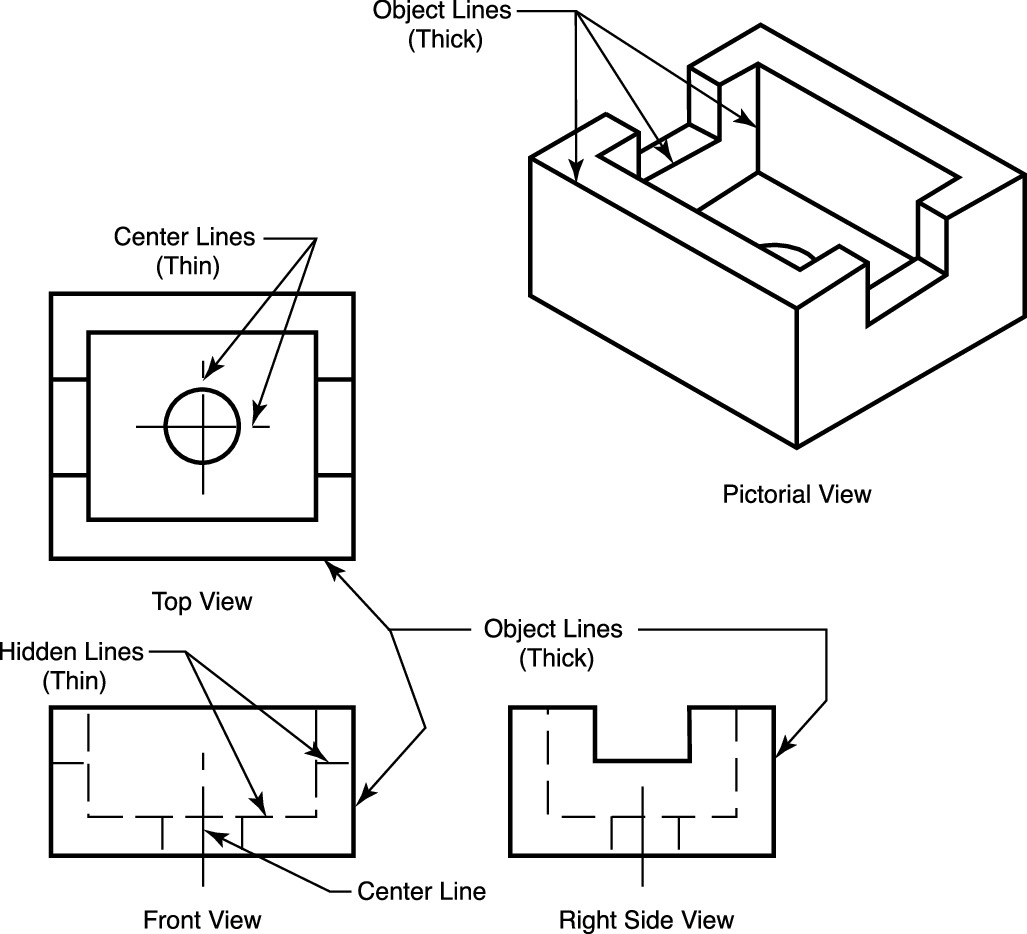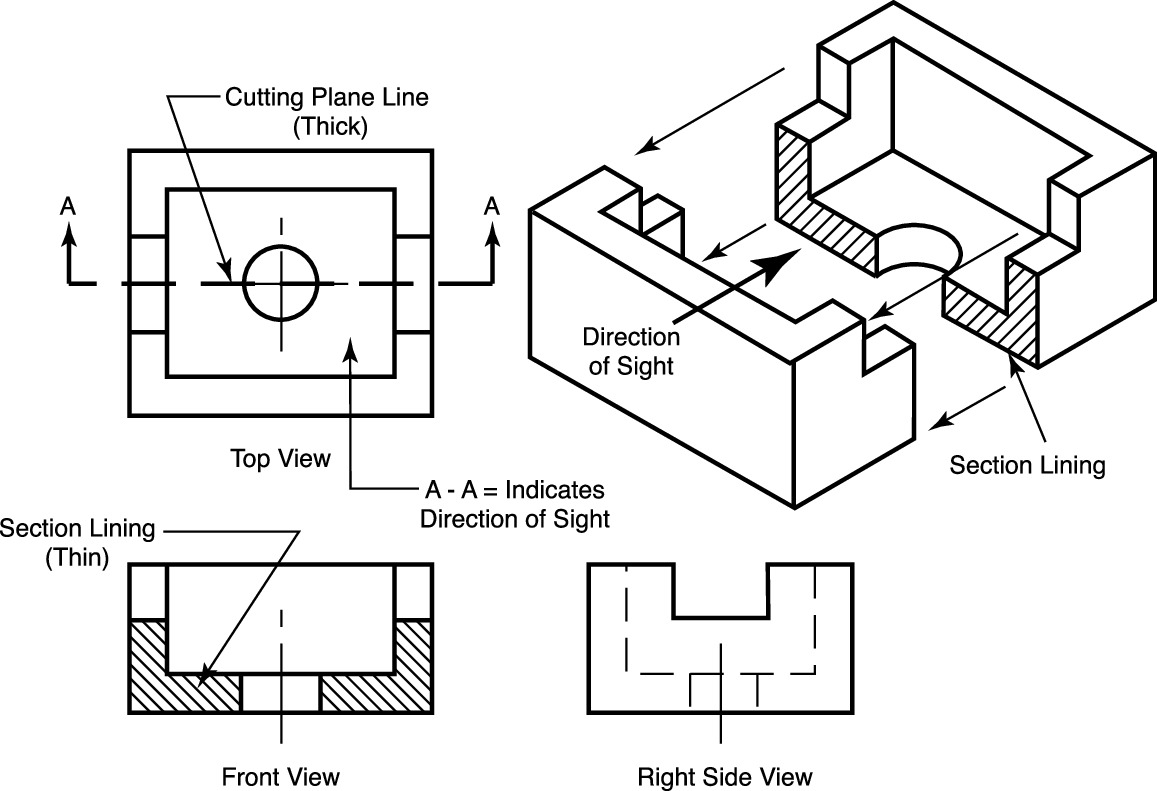Have you ever wondered why learning how to sketch is important, especially in carpentry? Well, let me tell you, it’s a skill that can make a world of difference in your woodworking projects.
Sketching plays a crucial role in carpentry because it allows you to visualize your ideas before you even pick up a tool.
In this article, we’ll explore why sketching is essential in carpentry and how it can help you bring your woodworking creations to life. So, grab your pencil and paper, and let’s dive in!

The Importance of Learning How to Sketch in Carpentry
In the world of carpentry, the ability to sketch and visualize designs is paramount. Sketching allows carpenters to transform ideas into tangible plans and serves as a blueprint for the construction process. While some may argue that modern technology like CAD software can replace the need for sketching, the art of hand-drawn sketches continues to hold significant value in carpentry. In this article, we will explore the reasons why learning how to sketch, especially in carpentry, is essential for both professional carpenters and anyone interested in pursuing a career in woodworking.
The Power of Visualization
One of the key reasons why learning how to sketch is crucial in carpentry is the power of visualization it provides. When working on woodworking projects, being able to visually conceptualize and communicate ideas is vital. Sketching allows carpenters to take abstract thoughts and transform them into a tangible representation, bridging the gap between imagination and reality. By sketching, carpenters can examine various design options, experiment with different elements, and make adjustments before starting the construction process. This ability to visualize and iterate designs not only enhances the overall quality of the finished product but also saves time and resources by identifying potential issues early on.
Moreover, sketching helps carpenters communicate their ideas and intentions effectively with clients, contractors, and other team members involved in a project. Sketches provide a common visual language that ensures everyone is on the same page, reducing misunderstandings and facilitating smooth collaboration. Whether it’s discussing the dimensions of a custom-built piece of furniture or planning intricate woodworking details, sketches serve as a visual reference that brings ideas to life and facilitates clear communication.
Enhancing Problem-Solving Skills
Learning how to sketch in carpentry goes beyond visual representation. It also serves as a powerful tool for enhancing problem-solving skills. Carpentry projects often come with challenges and obstacles that require creative thinking and adaptability. When facing complex construction situations, being able to visualize and sketch potential solutions is invaluable.
Sketching allows carpenters to deconstruct a problem visually, assess different approaches, and experiment with alternative solutions. By sketching out different possibilities and evaluating them, carpenters can gain insight into the feasibility, efficiency, and aesthetics of each option. This problem-solving process enables carpenters to think critically, make informed decisions, and ultimately find the best course of action to overcome challenges.
Preserving Tradition and Craftsmanship
In a world increasingly driven by technology, learning how to sketch in carpentry helps preserve the traditions and craftsmanship at the heart of woodworking. Sketching is not only a practical skill but also a form of artistic expression and creativity. It allows carpenters to combine technical knowledge with an artistic touch, infusing their projects with a unique sense of craftsmanship and attention to detail.
Hand-drawn sketches showcase the thought process and personal touch of the carpenter, highlighting the dedication and skill that goes into each woodworking project. By keeping the tradition of sketching alive, carpenters honor the legacy of their craft and contribute to its continued relevance in a rapidly advancing world. Furthermore, sketching serves as an inspiration and a source of motivation for future generations of carpenters, encouraging them to embrace the artistry and creativity inherent in woodworking.
Benefits of Learning How to Sketch in Carpentry
Learning how to sketch in carpentry offers numerous benefits beyond the specific advantages mentioned above. Here are some additional benefits:
- Improved spatial awareness and visualization skills
- Increase in precision and accuracy in measurements
- Ability to plan projects more efficiently
- Enhanced understanding of structural stability and aesthetics
- Opportunity to explore creativity and design versatility
- Ability to create custom and one-of-a-kind pieces
- Development of a personal style and signature in woodworking
Tips for Learning How to Sketch in Carpentry
For those interested in learning how to sketch in carpentry, here are some tips to get started:
- Invest in quality sketching materials, such as sketch pads, pencils, rulers, and erasers.
- Practice regularly to improve sketching skills and develop your own style.
- Study and analyze existing carpentry sketches to learn from experienced craftsmen.
- Experiment with different sketching techniques, such as shading, cross-hatching, and perspective drawing.
- Seek feedback from experienced carpenters or join woodworking communities to gain insights and learn from others.
- Utilize technology alongside traditional sketching methods, such as using CAD software for more complex designs.
- Attend workshops, classes, or apprenticeships to learn from experts and gain hands-on experience.
Incorporating Sketching into Modern Carpentry
While technology has undoubtedly made its mark on the carpentry industry, the value of learning how to sketch remains relevant and essential. Modern carpenters can harness the power of both traditional hand-drawn sketches and digital tools to create comprehensive and detailed plans that enhance their craftsmanship.
By combining the benefits of sketching with the convenience and precision of CAD software, carpenters can adapt to the evolving demands of the industry without sacrificing the artistry and creativity that make woodworking truly special. The integration of these two approaches allows carpenters to produce high-quality work while preserving and honoring the traditions of their craft.
In Conclusion
Learning how to sketch, especially in carpentry, is a skill that holds great importance in the woodworking world. From the power of visualization and problem-solving to preserving craftsmanship and tradition, sketching offers countless benefits to carpenters. By embracing the art of sketching and incorporating it into modern carpentry practices, craftsmen can elevate their work, communicate their ideas effectively, and leave a lasting legacy in the world of woodworking.
Key Takeaways: Why It Is Important to Learn How to Sketch, Especially in Carpentry?
- Sketching helps carpenters visualize their final product before starting the construction process.
- It allows carpenters to plan and make adjustments to their design, ensuring accuracy and precision.
- Sketches serve as a reference guide throughout the project, helping carpenters stay organized and focused.
- Learning how to sketch develops a carpenter’s problem-solving skills and creativity.
- Sketching provides effective communication with clients, allowing them to see and approve the design beforehand.
Frequently Asked Questions
If you’re interested in carpentry, learning how to sketch is an essential skill. Sketching allows you to plan your projects, visualize designs, and communicate ideas effectively. Below are some frequently asked questions that can help you understand why sketching is important in carpentry.
What role does sketching play in carpentry?
Sketching plays a critical role in carpentry as it helps you plan and visualize your projects before you begin cutting and assembling materials. By creating detailed sketches, you can work out the dimensions, proportions, and structural aspects of your design. This allows you to identify any potential issues or modifications that need to be made before executing the project.
Sketching also aids in communication, as you can effectively convey your ideas and concepts to clients or team members. It allows for better collaboration and understanding of the overall vision, ensuring that everyone is on the same page before starting the carpentry work.
Can sketching save time in carpentry projects?
Absolutely! Sketching can save you time in carpentry projects by helping you plan and organize your work effectively. By sketching out your design, you can identify any potential flaws or challenges ahead of time, allowing you to make adjustments before you start cutting and assembling materials.
Furthermore, a detailed sketch enables you to create a materials list, ensuring that you have all the necessary components and quantities before beginning your project. This prevents unnecessary trips to the store or interruptions during construction. Ultimately, taking the time to sketch can save you from costly mistakes and time-consuming rework, making your carpentry projects more efficient.
Why is it important to learn how to sketch accurately in carpentry?
Learning how to sketch accurately is crucial in carpentry as it directly affects the outcome of your projects. A precise sketch ensures that you have a clear vision and understanding of your design before you start building. It helps you avoid costly mistakes in measurements or assembly, saving you time and money in the long run.
Accurate sketching also enhances communication with clients or team members. It allows you to present a realistic representation of your design, ensuring that the final product aligns with expectations. Additionally, practicing accurate sketching improves your overall carpentry skills, enabling you to develop a keen eye for detail and precision.
Can sketching impact the quality of carpentry work?
Without a doubt, sketching has a direct impact on the quality of carpentry work. By sketching out your design, you can plan the project meticulously, taking into account all the necessary measurements, dimensions, and joinery techniques. This attention to detail translates into high-quality craftsmanship.
Sketching also allows you to experiment with different design elements and variations, helping you refine your ideas and choose the best possible options. It helps you identify potential pitfalls or weak points in your design and address them proactively, resulting in a stronger and more structurally sound finished product.
Can sketching in carpentry foster creativity?
Absolutely! Sketching in carpentry provides a platform for your creativity to flourish. It allows you to explore various design options, experiment with different styles, and visualize unique solutions to design challenges. Through sketching, you can unleash your imagination, bringing your creative ideas to life in a tangible way.
Sketching also enables you to refine and iterate on your designs, enhancing the creative process. By sketching multiple concepts, you can compare and evaluate different possibilities, ultimately leading to more innovative and visually appealing carpentry work.

Drawing Is IMPORTANT – Why YOU Should Do It
Summary
Learning how to sketch is crucial, especially in carpentry, for a few important reasons. First, sketching helps you visualize your ideas before you start building, reducing the chances of mistakes and saving time in the long run. Second, sketches serve as a guide, helping you plan and measure accurately, ensuring your finished project turns out just as you envisioned. Lastly, sketching is a great way to communicate your ideas with others, such as clients or fellow carpenters, making it easier to collaborate and bring your shared vision to life.
In conclusion, sketching is an essential skill in carpentry that offers numerous benefits, from preventing errors to improving communication. So grab a pencil, some paper, and let your creativity flow!
